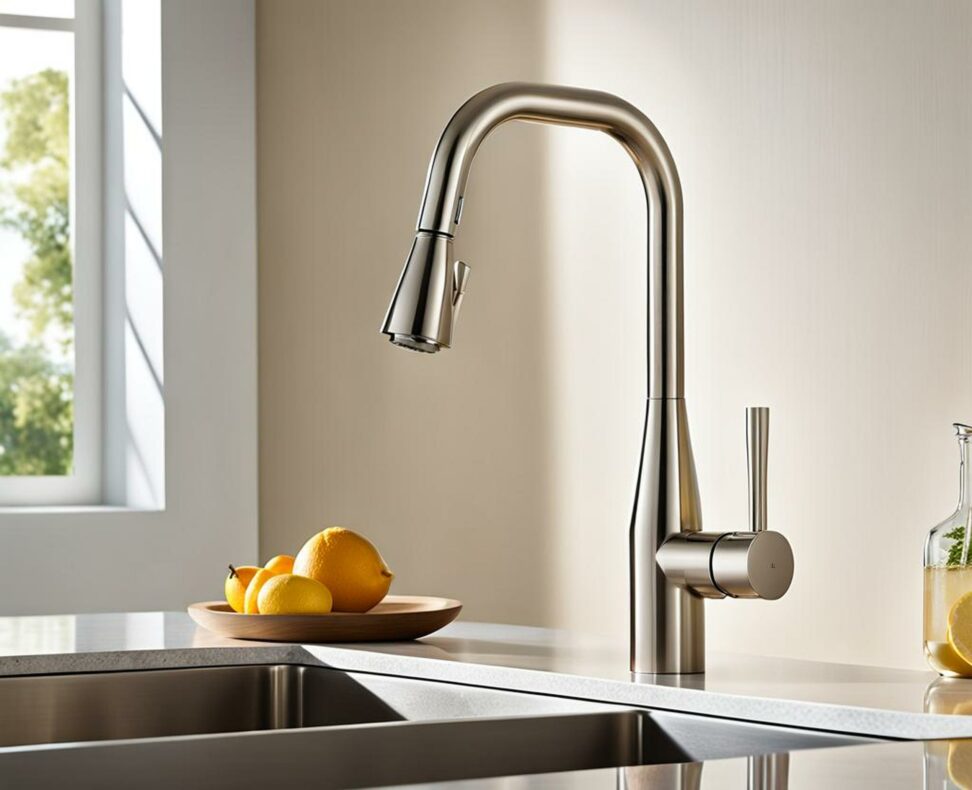Warm Metal or Cool Metal: Comparing Brushed Nickel & Stainless Faucets
When choosing new faucets for your kitchen or bathroom, two of the most popular finishes are brushed nickel and stainless steel. But which option is right for your space and decor? We'll compare the pros and cons of brushed nickel vs. stainless steel faucets to help you make the best decision.
Brushed nickel and stainless steel both offer attractive, durable options. But they create very different looks and have unique traits when it comes to maintenance, durability, and coordinating with other finishes.

The Visual Appeal of Brushed Nickel
Brushed nickel faucets have a wonderful vintage appeal. The soft, warm, grayish-brown tone works well in traditional kitchens and bathrooms.
Unlike polished nickel that has a mirrored look, brushed nickel is matte. This muted finish nicely masks water spots and fingerprints. You don't have to worry about every little smudge showing.
Brushed Nickel's Advantages
If you love the aged sophistication of antique lighting and hardware, brushed nickel is an excellent choice. The understated yet elegant look pairs beautifully with marble, granite, and other natural stone countertops.
The muted color also allows the veining and patterns of stone surfaces to take center stage. In bathrooms, brushed nickel coordinates nicely with vintage tiles or subway tiles.
Considerations for Brushed Nickel
Brushed nickel is softer and less durable than stainless steel. It can scratch, stain, and tarnish over time, especially with exposure to water. Frequent gentle cleaning is required to keep brushed nickel faucets looking their best.
In bathrooms, mineral deposits from hard water, soap scum, and products like shampoo can damage brushed nickel. This makes maintenance more difficult.
The Modern Look of Stainless Steel
If you want a contemporary, high-end look, stainless steel faucets are an excellent option. The iconic silver tone matches seamlessly with stainless steel appliances.
Stainless steel's smooth, shiny finish also pairs nicely with tile, glass, and engineered stone countertops like quartz. It brings a clean, crisp look to modern kitchens and baths.
The Benefits of Stainless Steel Faucets
Stainless steel's first major advantage is its legendary durability. The electroplated finish strongly resists corrosion, scratches, stains, and tarnishing.
This makes maintenance much easier than with brushed nickel. Simply wipe down stainless steel fixtures as needed without fear of damaging the finish.
Stainless steel also never goes out of style. Its neutral tone works in both traditional and contemporary spaces.
Factors to Consider with Stainless Steel
Stainless steel does come at a higher price point than brushed nickel since it is more expensive to manufacture. The increased durability and easier maintenance do offset the higher initial cost over time.
Fingerprints and water spots also show more on stainless steel's glossy finish. More frequent wiping down is needed to keep the surface spotless.
Caring for Your Faucet Finish
Proper care is essential to keep both brushed nickel and stainless steel faucets looking pristine. Always blot dry with a soft towel after use to prevent mineral buildup and water spots.
Use a gentle cleaner and soft cloth when needed. Avoid abrasive scrubbers or cleaners with harsh chemicals.
For brushed nickel, be diligent about cleaning spills and splashes to prevent staining and corrosion. Regular polishing also helps maintain its luster.
When deciding between brushed nickel or stainless steel, consider your overall budget and decor. Brushed nickel works best for traditional, softer aesthetics and costs less. Stainless steel brings a sleek, modern look and is worth the higher price for its increased durability.
Most importantly, make sure your faucet finish complements countertops, sinks, lighting, appliances, hardware, and other fixtures in the space. This creates a cohesive, polished look you'll enjoy for years to come.